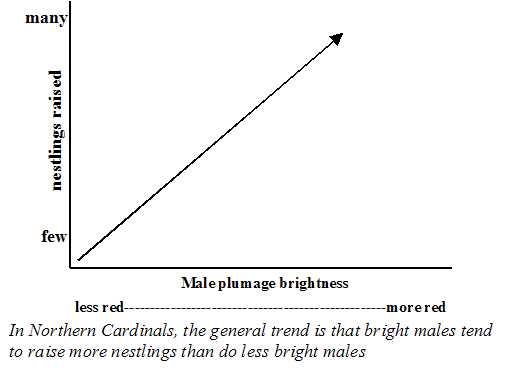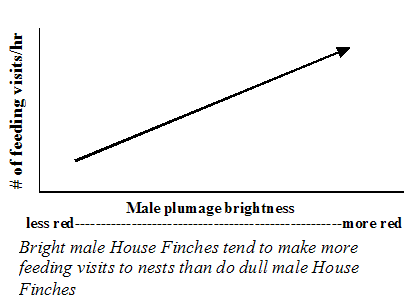NATURAL SELECTION AND VARIATION
Lesson Details:
(also available as a Word Doc)
Materials
Preactivity Discussion
Procedure
Data Analysis
Discussion
Assessment
Materials
Preactivity Discussion and Predictions
Using the worksheet or before handing out the worksheet, start the activity by having students describe their own observations of birds, with an emphasis on color and bill use. Ask students to make a qualitative prediction about how variable they expect individuals within a species to be and compare this prediction to how variable individuals among species might be, perhaps by guiding students to compare closely related species like cardinals and finches and, then perhaps, more distantly related species such as hawks and ducks. If time permits, short field observations of common birds can give students additional opportunities to learn about variation and how one might measure traits in the field.
Procedure
- Give students the web entry page for the photos of the specimens: http://csip.cornell.edu/Curriculum_Resources/csip/ardia/lesson_start_student.asp
- Ask students to describe and sketch the differences they observe among individuals. The quality of student insights is greatly improved by giving students the time and encouragement to make their own observations.
- For color, ask students to score the breast of each bird in the photos. Students will gain better understanding of measurement and experimental design if they are guided to determine their measurement protocol, based on the suggestions for where to measure color.
- For bill size, students should take multiple measures of bill morphology such as bill length and depth. In the same manner as color, students will learn through guidance on how to determine the exact measurement protocol. Diagrams of where and how to measure are provided with the specimen photos
Data Analysis
Once all the data have been collected, students should create a frequency histogram of at least one color variable and one bill size measure. Students should lump their bill size data into a few (preferably no more than 6) categories in order to generate a pattern in their data. Some examples of how variation might be distributed are given in Fig. 1 below, as well as an example from students who conducted this exercise in Rochester, New York in Fig. 2 below. Students should assess how much variation they measured in the traits they measured by determining if the trait is distributed evenly or skewed. For advanced classes, students could make a statistical assessment of variation such as kurtosis (a measure of skew), standard deviation or standard error (which corrects for sample size differences). For more information on statistics.
| Fig. 1. Some possible histograms of bill size distribution. As bill size increases, the number of individuals with large bills may (A) decrease or (B) increase. However, the most common form of variation is that the intermediate value is the most common and that extreme values are rare (C). |
Fig. 2. Sample data from 12 Scarlet Tanager specimens measured by students at East High School, Rochester, NY
|
Discussion
The goal of discussion should be for the students to synthesize their observations and to predict the relationship between the value of a particular trait (color or bill size) and natural selection. The most effective predictions come through discussion of their own prior observations, the information presented in class, and any insight they might have gained from handling the specimens. Give the students a blank graph with color or bill size on the x-axis and survival/reproduction on the y-axis. They should draw on the graph a curve or line showing how they think the ability to survive and reproduce changes as the value of the trait changes (i.e. are colorful birds more successful than are less colorful birds?). At the end of the discussion, present the students with the data summarized in Figs. 3 and 4 to see how their predictions match with results found by researchers.
 |
 |
Fig. 3. The relationship between plumage coloration and reproduction in Northern Cardinals and House Finches
|
|
|
| Fig. 4. The relationship between body and bill size and survival in birds |
In discussion, have the students consider two general questions:
(1) How might color score or bill size influence survival and reproduction?
(2) What might underlie or cause the pattern of variation they have measured?
Color and bill size variation arises in different ways. An individual’s bill size is generally a function of their genetics and the environmental conditions they experienced while the bill was growing, so that bill size will not change much over the life of an adult. Thus, simplistically, the genetics of an individual might determine the range of possible bill sizes, while environmental conditions during growth will determine the actual bill size. Feather color, on the other hand, reflect current quality, because feathers are molted and regrown every year. Thus color can change multiple times over the course of an individual’s life. Each trait thus conveys different information about the quality of an individual and may have a different link with the function and success of each trait.
Birds acquire their color from pigments collected from the environment. Red, orange and yellow colors are usually derived from carotenoids (such as occur in carrots). These compounds occur naturally in seeds and fruits, but can be scarce in the wild. Accordingly, individuals must invest time and energy in finding sufficient quantities. Because individuals differ in their ability to find and metabolize these pigments, we see a range of color variation within a species. It is important to note that bright coloration, on its own, is rarely directly related to survival and reproduction. Rather, bright coloration is an indicator of high quality individuals that are also good foragers and are in good health. On average, females tend to select males that have brighter plumage to gain access to a bright males' foraging ability and genes. Thus, males that are able to maintain bright plumage tend to reproduce more than do less brightly-colored males. This pattern is common in many species of birds, as well as in mammals and other vertebrates.
In a discussion on color variation, explain to students the pathways by which individuals become colorful, e.g. birds must spend time and energy searching for scarce pigments and then incorporate them into their feathers and that individuals differ in the time available and their ability to find pigments. In addition, have students brainstorm on the possible costs and benefits of being colorful, such as increased attractiveness and increased conspicuousness to predators.
In considering bill size, students should consider the relative advantages of having an extreme vs. intermediate bill size and when each might be favored. They should also consider what they think the probability of conditions that favor extreme vs. intermediate bill sizes might be. If conditions were benign, would there be much selection on bill size? If conditions were harsh, how would the strength of selection change? They might also contrast how color and bill size influence natural selection differently. For example, color might relate more to the probability of mating, while bill size might influence probability of surviving.
Assessment Strategy
Students can be evaluated in two main areas: (1) content and (2) skills. Student understanding of content can be evaluated by assessing the worksheet or quizzes as a measure of the depth of student understanding. You can evaluate the precision of the students’ measurements, their attention to detail, their graphs, and the depth and breadth of their observations of the specimens to determine their inquiry skills.
|

